*This post is a pillar post for controlled environments. Multiple in-depth blog posts have been linked throughout this article for more information on specific topics.
Table of Contents
ToggleIntroduction
Cleanrooms , dry rooms, and CMM rooms are specialized controlled environments that play a crucial role in various industries.
What exactly are these controlled environments?
Well, cleanrooms are designed to create a sterile environment with low levels of contaminants, dry rooms ensure a moisture-free environment, and CMM rooms provide an environment suitable for precision measuring capabilities.
We created this comprehensive guide to provide an in-depth understanding of these three main controlled environments and how they can be effectively implemented.
Our team wants this article to serve as a comprehensive resource for professionals and industries seeking to understand the concepts, functions, and implementation of controlled environments.
If you’re wondering why you’d want to even build a cleanroom, or other type of controlled environment, click here.
Let’s get started!
What is a Controlled Environment?
In this first section, we’ll provide a high-level overview of controlled environments, talk about their significance, the industries they’re commonly associated with, and discuss the key factors that are required for a structure to be considered a controlled environment.
The Significance of Controlled Environments
A controlled environment refers to a purpose-built space where specific parameters such as cleanliness, moisture levels, temperature, and precision measurements are tightly regulated, depending on the specific purpose of the room.
The significance of a controlled environment lies in its ability to ensure the integrity and reliability of processes and products by providing optimal conditions.
Controlled environments can be legally required in some industries, or just an industry standard practice that is expected for the quality control of a finished product.
What are these industries that use controlled environments?
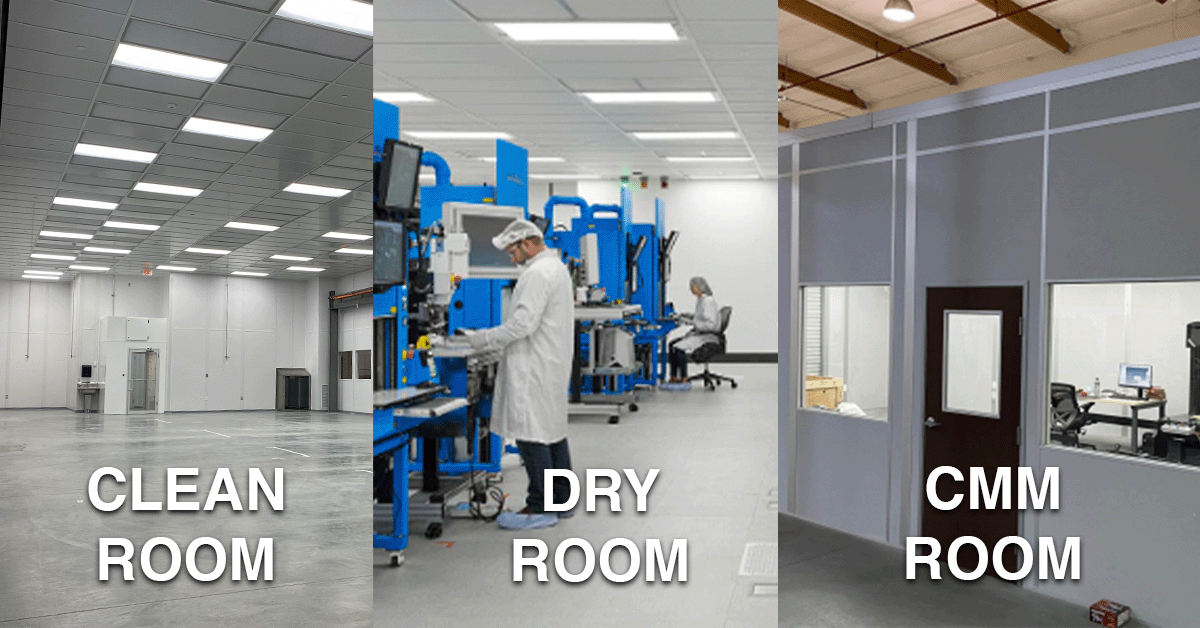
Industries that use Controlled Environments
Like we mentioned briefly before, controlled environments find applications in a wide range of industries.
Specifically, they are extensively used in pharmaceuticals, biotechnology, electronics manufacturing, aerospace, automotive, semiconductor, research laboratories, and many other niche sectors that require stringent environmental control.
Of course, there are many other industries that could use this type of environment, but these are the most common clients that we interact with.
So, what makes a controlled environment so special?
Key Parameters of a Controlled Environment
Several key factors and parameters are required to label something a controlled environment.
These include maintaining strict cleanliness standards (cleanrooms), controlling moisture levels, regulating temperature and humidity (dry rooms), and ensuring precise measurement capabilities (CMM room), depending on the type of room and use case, of course.
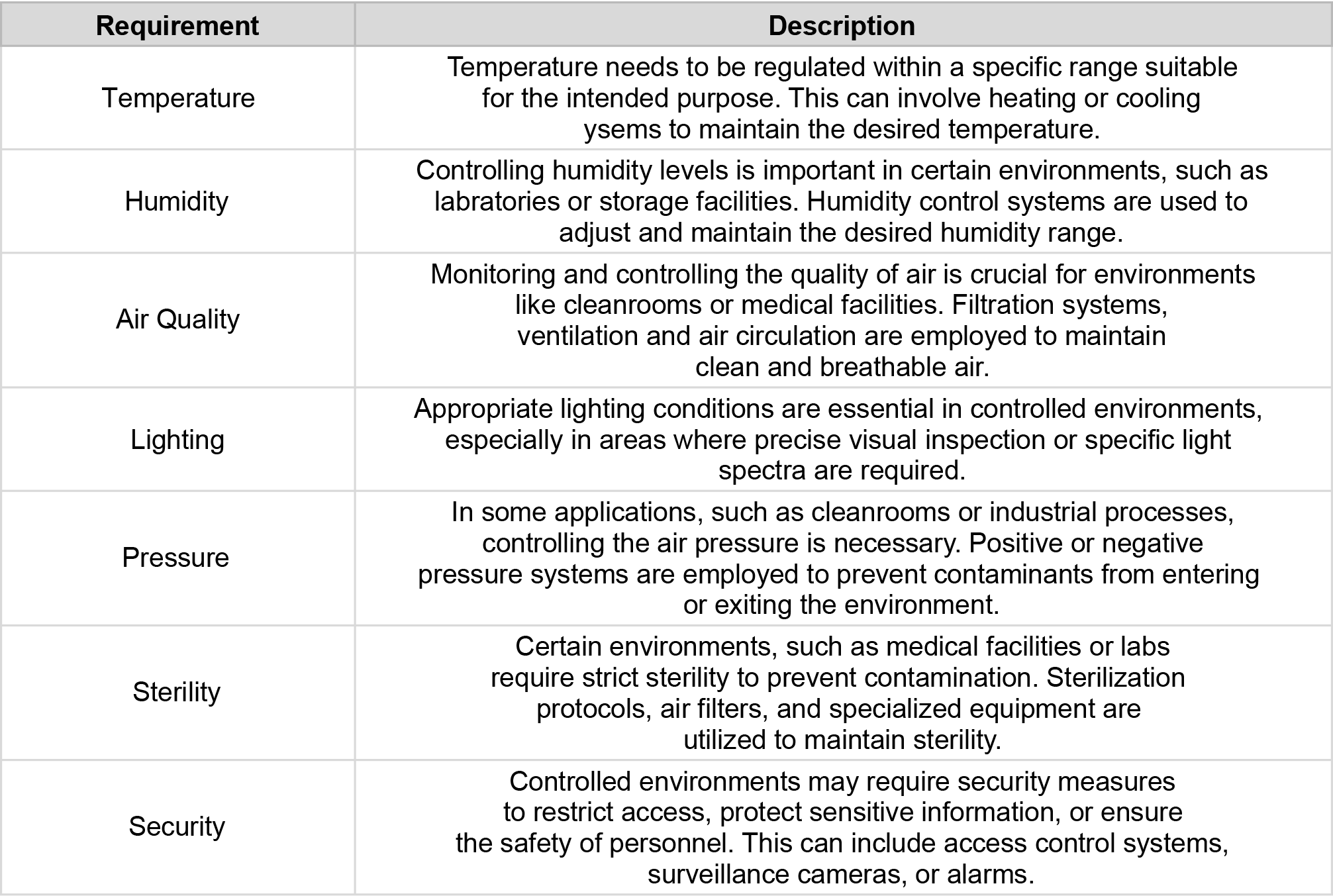
These factors collectively create an environment conducive to achieving desired outcomes and meeting industry-specific requirements.
Now that we’ve laid the foundation for the ins and outs of a controlled environment, it’s time to explore the three main types of controlled environments in detail: cleanrooms, dry rooms, and CMM rooms.
Each type has its unique characteristics, functions, and applications. Our hope is that you will gain a comprehensive understanding of their specific requirements and implementation strategies.
Cleanrooms: Creating a Sterile Environment
Up first is the most common type of controlled environment, the cleanroom.
In these next few paragraphs, we’ll go more into detail about why someone would want to construct a cleanroom, how they work, what different types exist, the industries they’re found in, and so much more.
Buckle up, this is going to be a lot of information.
GET THE LATEST INDUSTRY NEWS DELIVERED TO YOUR INBOX
Stay on the forefront of your industry with our weekly e-newsletter.
What is a Cleanroom?
A cleanroom is a controlled environment designed to minimize airborne particles, contaminants, and microorganisms through a variety of air filters and sanitization procedures such as gowning and regular cleaning schedules.
Temperature, humidity, and differential pressure control may be implemented in addition to control of particulate.
The biggest draw of a cleanroom is that it provides an environment with controlled particulate levels necessary for sensitive processes and industries.
Let’s look at how they work.
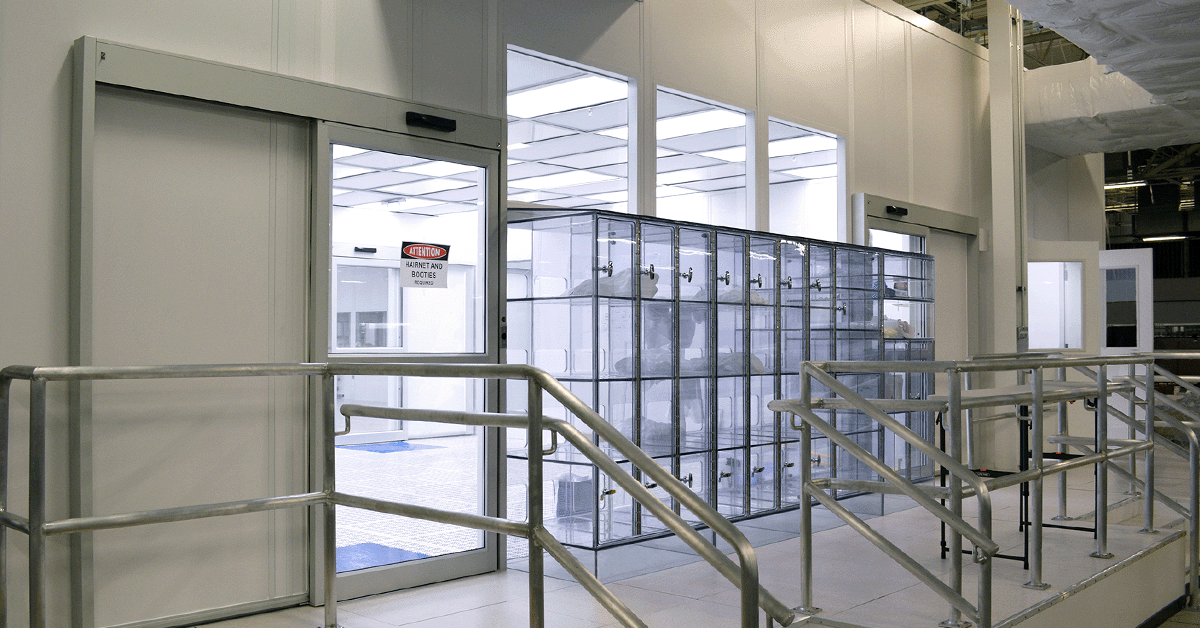
How do Cleanrooms Work?
Like we mentioned briefly, cleanrooms work by employing advanced technologies such as specialized HVAC (Heating, Ventilation, and Air Conditioning) systems and ULPA (Ultra-Low Particulate Air) or HEPA (High-Efficiency Particulate Air) filters.
These systems circulate filtered air, removing contaminants and maintaining the desired cleanliness level. This is called Air Change Rates. Check out this article on ACR here.
Our designers take measures to make sure the correct filters and air-flow systems are chosen for the ISO classification required by our customer.
What type of companies need a cleanroom?
What Industries are Cleanrooms Used in?
Cleanrooms are used in industries such as pharmaceuticals, biotechnology, medical device manufacturing, electronics, nanotechnology, aerospace, and more.
These industries rely on cleanrooms to ensure product quality, research integrity, and compliance with regulatory standards.
By removing particulates effectively, a cleanroom makes a company’s process more sterile, efficient, and consistent.
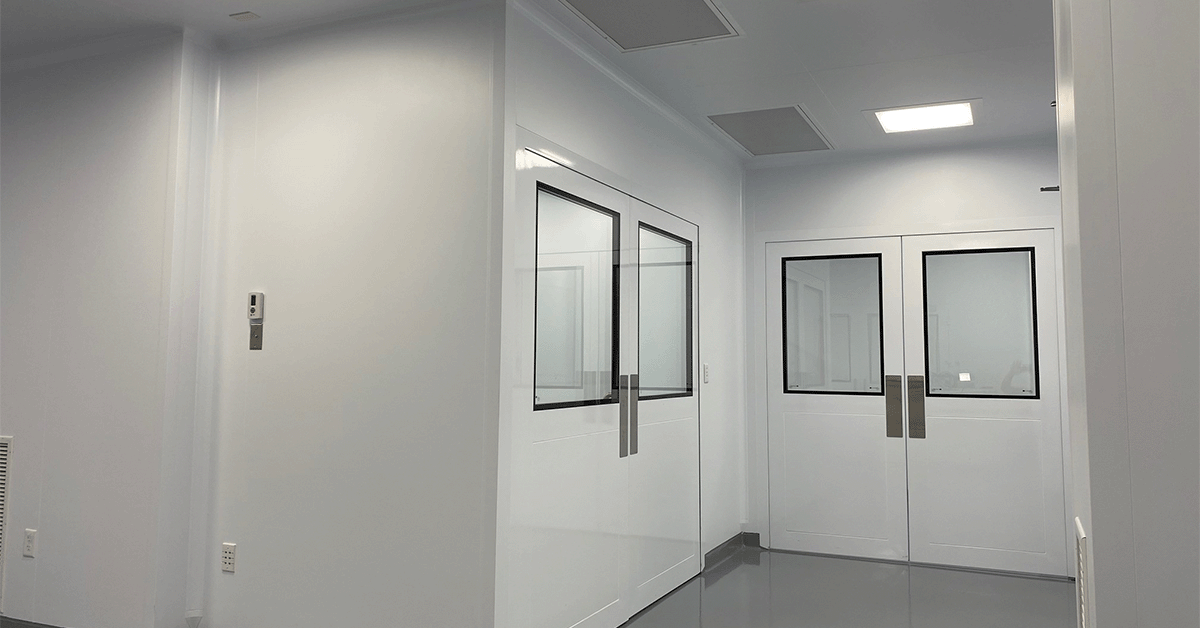
This is obviously extremely important for the medical industry due to governmental regulations, but manufacturing companies also rely on cleanrooms for a competitive advantage.
What different types of cleanroom options exist for these companies?
Different Types of Cleanrooms
Cleanrooms can be classified into various types based on the level of cleanliness required, and the type of material they’re constructed from.
These cleanliness classifications are known as an ISO value , and they range from ISO Class 1 (highest cleanliness) to ISO Class 9 (lowest cleanliness).
Each classification defines the allowable particle count per cubic meter of air.
Check out this ISO classification chart for more information:

When looking at the material used to construct the room, the two main design approaches are hardwall and softwall cleanrooms.
Each has its advantages and disadvantages, and should be chosen based on the level of cleanliness desired, the process that’ll take place in the room, and the overall budget for the project.
*It’s important to note that we specialize in constructing modular, hardwall cleanroom systems, and believe them to be the best possible solution for most applications. However, softwall rooms are appropriate given certain budgetary constraints, a desire for flexibility, and overall lower level of cleanliness required.
Cleanroom Components
Cleanrooms consist of various components that contribute to their functionality.
These include HVAC systems, ULPA and HEPA filters, cleanroom flooring, cleanroom ceilings, cleanroom walls, cleanroom furniture, and cleanroom lighting.
Each component serves a specific purpose in maintaining cleanliness, airflow, and ergonomics within the cleanroom.
All of these components require a lot of care and dedication to keep up to spec. Let’s talk about that.
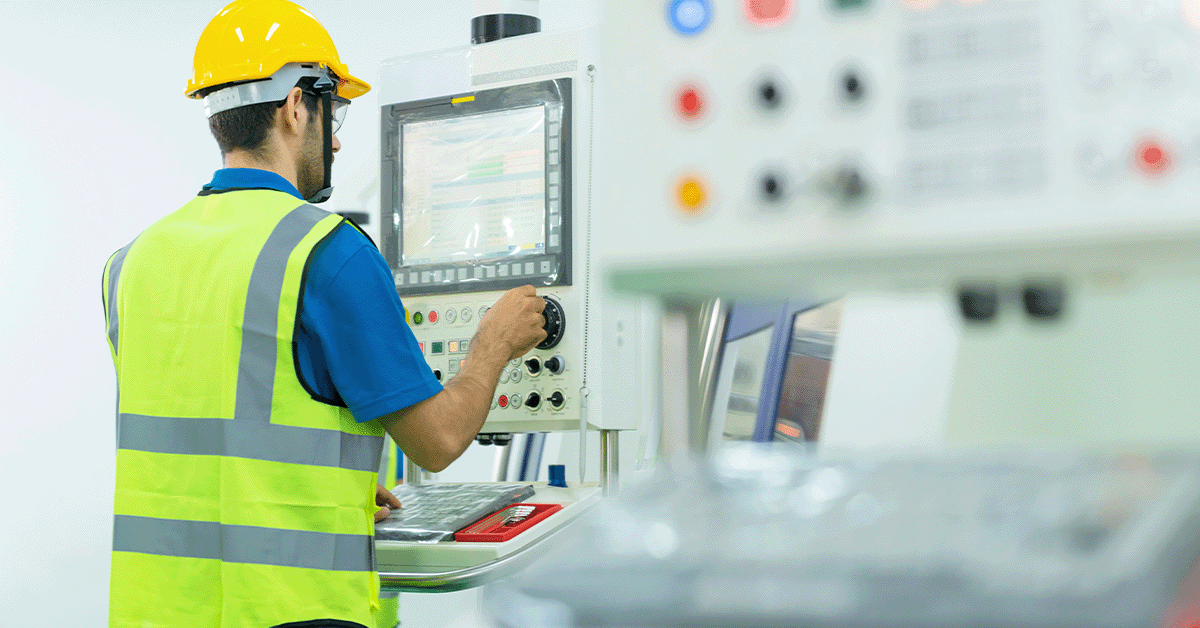
Cleanroom Maintenance
Proper maintenance is crucial to preserve the integrity of cleanroom operations.
Regular cleaning, filter replacements, and monitoring of environmental conditions are just some of these things your team needs to do to ensure optimal cleanliness levels.
Cleanroom Protocols
Cleanroom protocols, such as gowning procedures, cleaning, and monitoring/logging systems, are implemented to minimize contamination risks.
These protocols involve specific clothing requirements, strict hygiene practices, and continuous monitoring of particle counts, temperature, humidity, and other parameters.
In the coming months, we’ll be publishing plenty of blogs going step-by-step through these protocols.
Dry Rooms: Ensuring a Moisture-Free Environment
The next type of controlled environment we’ll look at, the dry room, focuses on maintaining a very low moisture content for very specific, delicate processes.
In this section, we’ll talk about the purpose of dry rooms, how they work, the industries they are found in, and a plethora of other topics.
Make sure to check out our blog titled: “What is a Dry Room?” for a lot more info.
What Does a Dry Room Do?
Looking at things very broadly, a dry room is a controlled environment specifically designed to maintain extremely low levels of humidity. It aims to prevent moisture-related issues, such as condensation, which can be detrimental to certain materials, processes, and products.
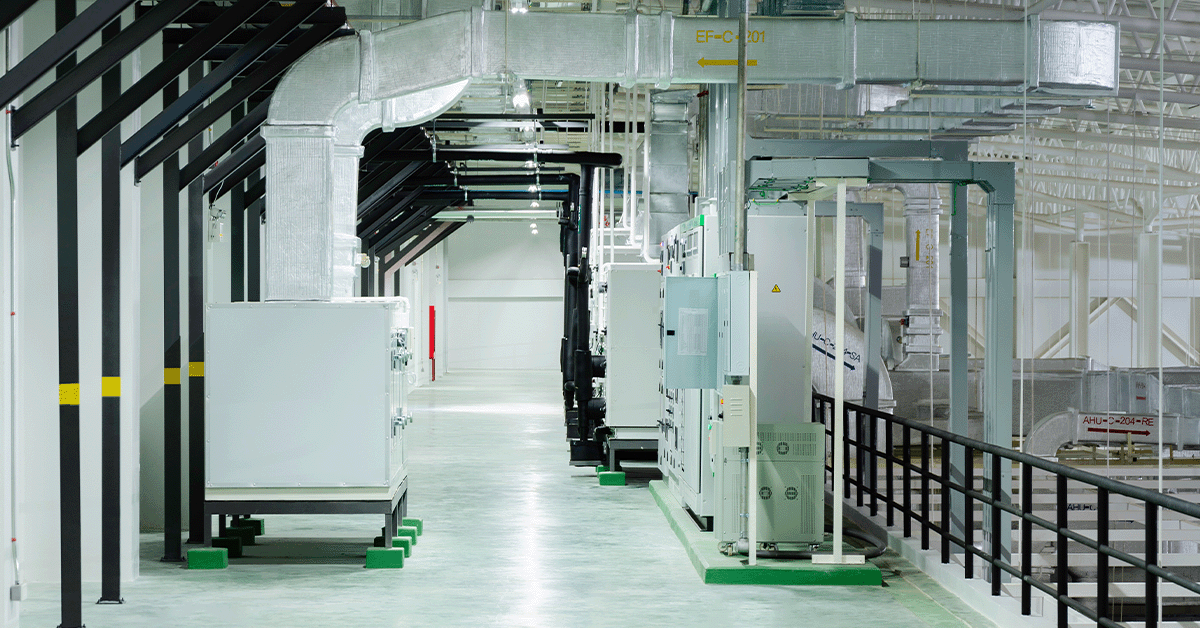
How Do Dry Rooms Work?
Dry rooms employ various technologies and components to achieve moisture control, which we’ll talk about more later.
Humidity control systems, such as desiccant systems, are utilized to actively remove moisture from the air, ensuring a dry environment.
Additionally, specialized flooring, ceilings, and walls with moisture barrier properties help to maintain the desired conditions.
Where would you find a dry room?
What Industries can use a Dry Room?
Dry rooms find applications in industries that require moisture-free environments,such as semiconductor manufacturing, lithium battery production, pharmaceuticals,and research laboratories.
These industries rely on dry rooms to prevent moisture-induced defects, ensureproduct quality, and maintain the stability of sensitive materials.
The biggest industry we see in this space is electronics manufacturing. Large companies such as SMART Microsystems, Samsung and Intel are producing high volumes of batteries, processors, and a variety of other vital electronics for our economy.
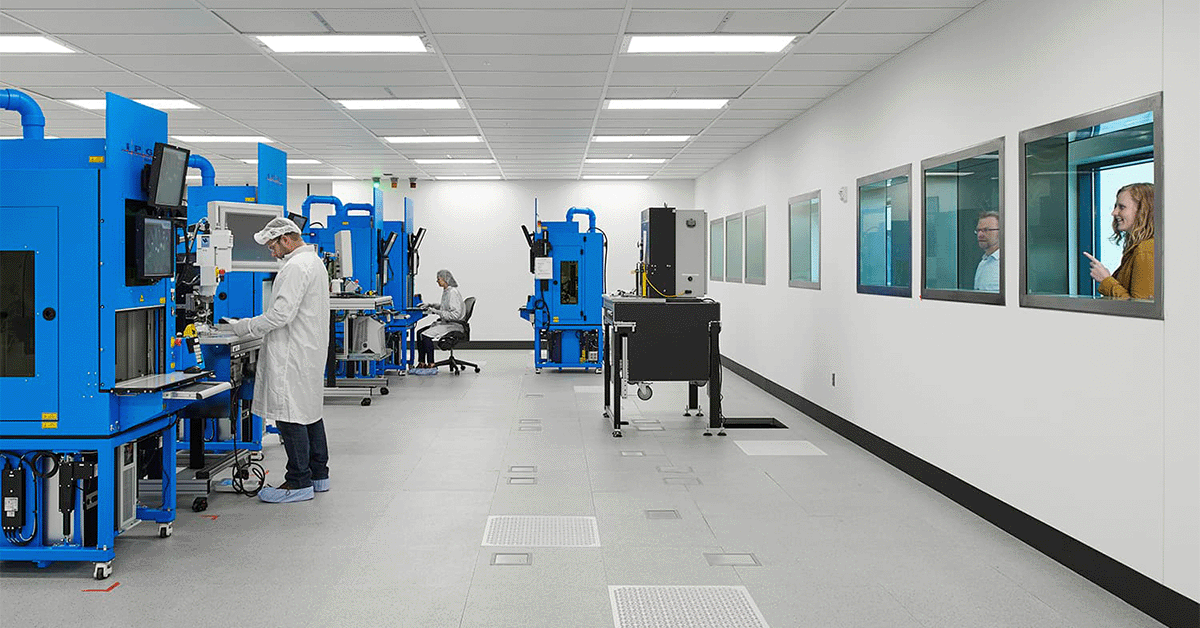
Dry Room Components
Key components of dry rooms include humidity control systems, desiccant systems, specialized flooring, ceilings, and walls.
Humidity control systems actively regulate the moisture content in the air, while desiccant systems absorb moisture to maintain dry conditions.
Specialized flooring, ceilings, and walls prevent moisture ingress from the surrounding environment.
Like cleanroom components, this is extremely complex, so we’re going to write a slew of content about them.
Dry Room Maintenance
Regular maintenance is essential to ensure the proper functioning of a dry room.
This includes monitoring humidity levels, inspecting and maintaining humidity controlsystems and desiccant materials, and ensuring the integrity of the moisture barrier components.
Routine checks and preventive maintenance help to sustain the moisture-free environment. It’s much easier to maintain a room to spec than have to do repairs later on due to negligence.
GET THE LATEST INDUSTRY NEWS DELIVERED TO YOUR INBOX
Stay on the forefront of your industry with our weekly e-newsletter.
Dry Room Monitoring
Monitoring humidity levels is crucial to ensure that the dry room maintains the desired moisture content.
Various methods and tools are available for monitoring humidity, including hygrometers and data logging systems.
Regular monitoring allows for proactive measures to be taken in case of anydeviations from the desired humidity levels.
This process is very similar to how cleanrooms are monitored, and often use the same type of technology

The Future of Dry Rooms
Like other industries, the controlled environment space is always evolving.
The future of dry rooms lies in advancements in humidity control technology and the integration of smart monitoring systems.
Improved energy efficiency, more precise control over humidity levels, and real-time monitoring capabilities will contribute to the evolution of dry room technology.
Having explored the significance and functioning of dry rooms, we now shift our focus to CMM rooms.
CMM rooms provide controlled environments specifically tailored for precision measuring applications.
CMM Rooms: Precision Measuring Environments
It’s time to talk about our third and final major sector in the controlled environment world, CMM rooms. CMM rooms are special, because they serve a very niche and specific market, the precision measuring world.
We’ll provide an overview of what a CMM room is, how it works, components, use cases, and much more.
What is a CMM Room?
A CMM room, short for Coordinate Measuring Machine room, is a controlled environment designed to facilitate accurate and precise dimensional measurements.
It provides a stable and controlled space where CMMs can operate optimally, free from environmental factors that could affect measurement accuracy.
How Does a CMM Room Work?
CMM rooms utilize various components and features to create an environment suitable for precision measurement.
Temperature control is critical to ensure stability, as temperature fluctuations can cause expansion or contraction of measurement components.
Vibration isolation measures are implemented to minimize external vibrations that could affect measurement accuracy.
Adequate lighting and proper air filtration systems further enhance the reliability of measurement results.
What are some specific use cases for this?
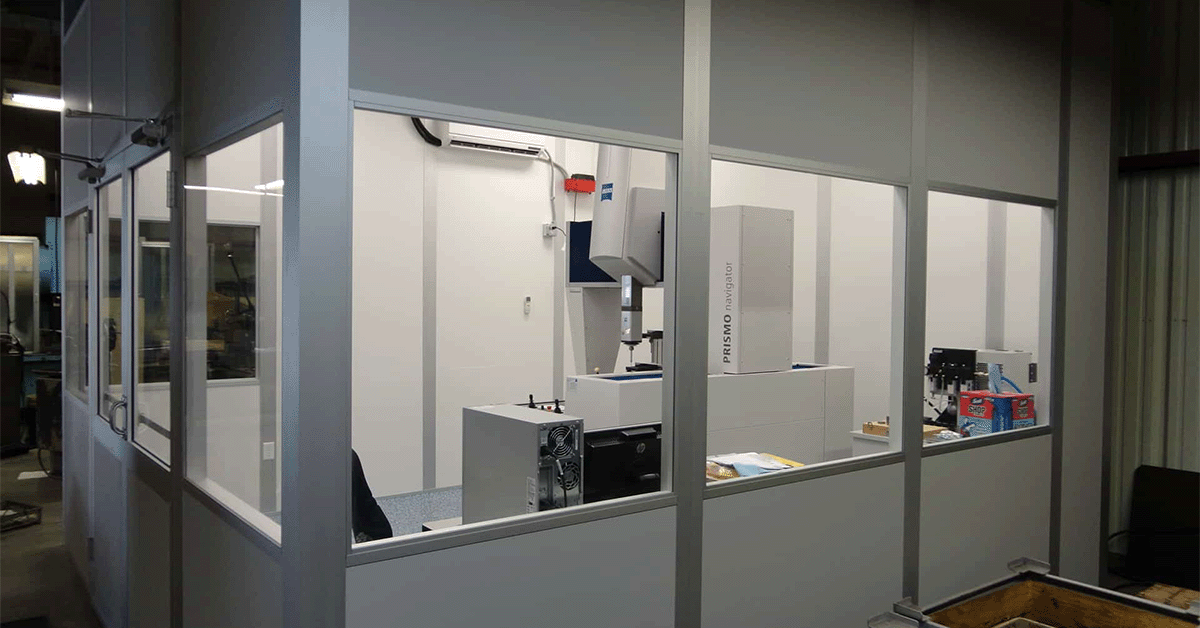
Use Cases for CMM Rooms
CMM rooms are utilized in markets such as automotive, aerospace, manufacturing,and engineering. Use cases include quality control inspections, part verification, and reverse engineering, among others.
CMM Room Components
Temperature control systems, vibration isolation measures, proper lighting, and effective air filtration systems are key components of CMM rooms.
Temperature control ensures a stable environment, while vibration isolation minimizes the impact of external vibrations on measurement accuracy.
Proper lighting conditions facilitate clear visibility, and air filtration systems maintain clean air to prevent contaminants from interfering with measurements.
Check back for more blogs explaining specific CMM components in detail.
CMM Room Calibration
Calibration is a crucial aspect of CMM rooms to ensure the accuracy of measurement systems.
Regular calibration of the CMM machine and associated equipment is necessary to maintain traceability and reliability in measurement results.
How is a CMM Room calibrated? Well, stay tuned for a future blog post about that.
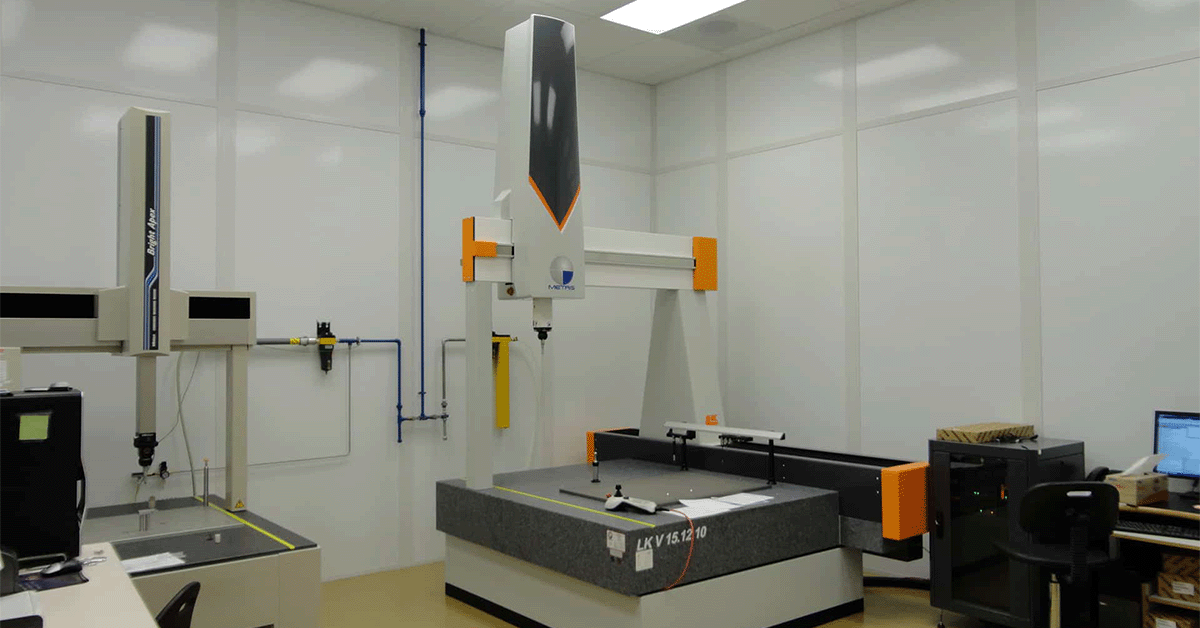
CMM Room Maintenance
Regular maintenance is essential to ensure the functionality and accuracy of CMM rooms.
Performing quality maintenance on this type of room includes routine inspections, cleaning and servicing of equipment, calibration checks, and monitoring environmental conditions to ensure compliance with specified parameters.
Implementing Controlled Environments
Having covered the intricacies of cleanrooms, dry rooms, and CMM rooms, we nowturn our attention to how your business could implement a controlled environment.
Implementing controlled environments requires careful consideration of specific industry requirements, compliance with regulations, and engaging professionals for design and construction.
Be Specific
Different industries and processes have unique requirements for controlled environments.
Understanding these specific requirements is crucial in designing and implementing an effective controlled environment.
Factors such as cleanliness standards, temperature, humidity, airflow, and other parameters need to be tailored to meet the needs of the industry and the processes involved.
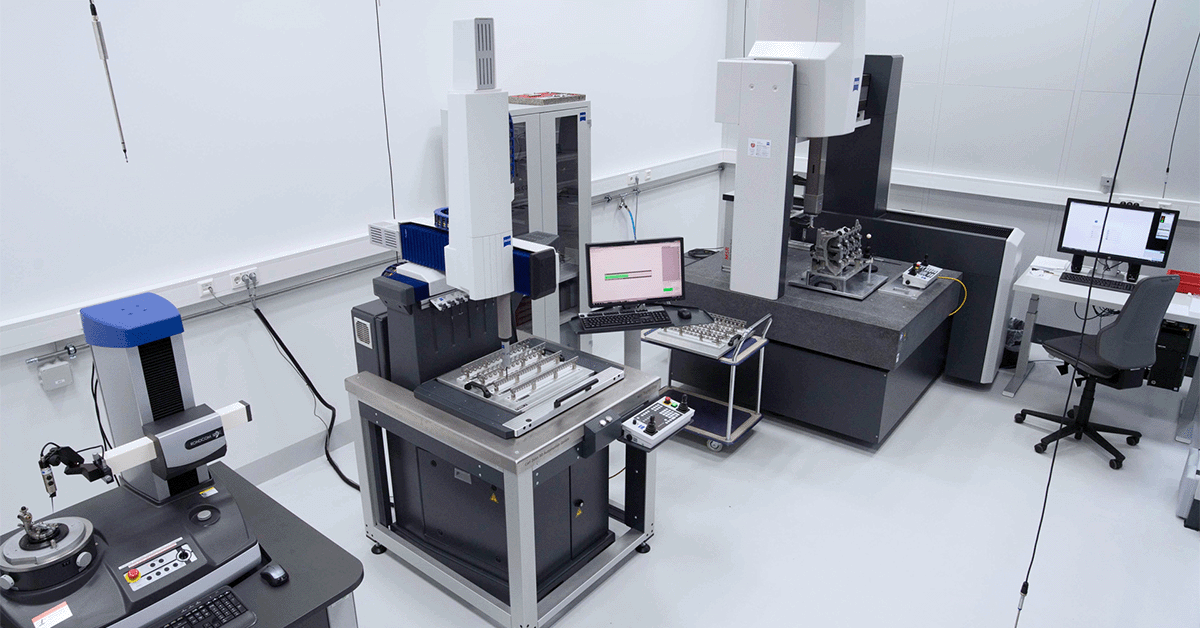
Hire Controlled Environment Experts
Engaging professionals such as ourselves with expertise in controlled environment design and construction is highly recommended.
We have the knowledge and experience to assess industry-specific requirements, design suitable environments, select appropriate components, and ensure compliance with regulations.
Regulation Compliance
Compliance with regulations is paramount when implementing controlled environments. Various regulatory bodies, such as the International Organization for Standardization (ISO) and government agencies, provide guidelines and standards for different industries.
Understanding and adhering to these regulations is essential to ensure the controlled environment meets industry-specific requirements and legal obligations.
If you’re working with us, we’ve got you covered.
Make sure to check out some more specific information on controlled environment regulations from our blog.
Operating Inside a Controlled Environment
Proper training and education are essential for personnel operating within controlled environments.
Training programs should cover topics such as cleanroom protocols, equipment operation, gowning procedures, monitoring and logging systems, and adherence to regulatory requirements.
Well-trained personnel contribute to the effective operation and maintenance of controlled environments.

Challenges and Solutions in Controlled Environments
While controlled environments offer numerous benefits, they also present challenges that need to be addressed. In the next section, we will explore common challenges and provide strategies and solutions for overcoming them.
Common Challenges and Risks
Controlled environments face various challenges and risks, including contamination, humidity control, temperature stability, and environmental factors.
These challenges can impact product quality, process efficiency, and regulatory compliance.
To overcome challenges in controlled environments, proactive strategies should be implemented.
These may include implementing strict cleaning and sanitization protocols, employing advanced humidity control systems, implementing temperature monitoring and control measures, and mitigating environmental factors through effective facility design and planning.
Here’s more detailed info on common challenges we see with our clients.
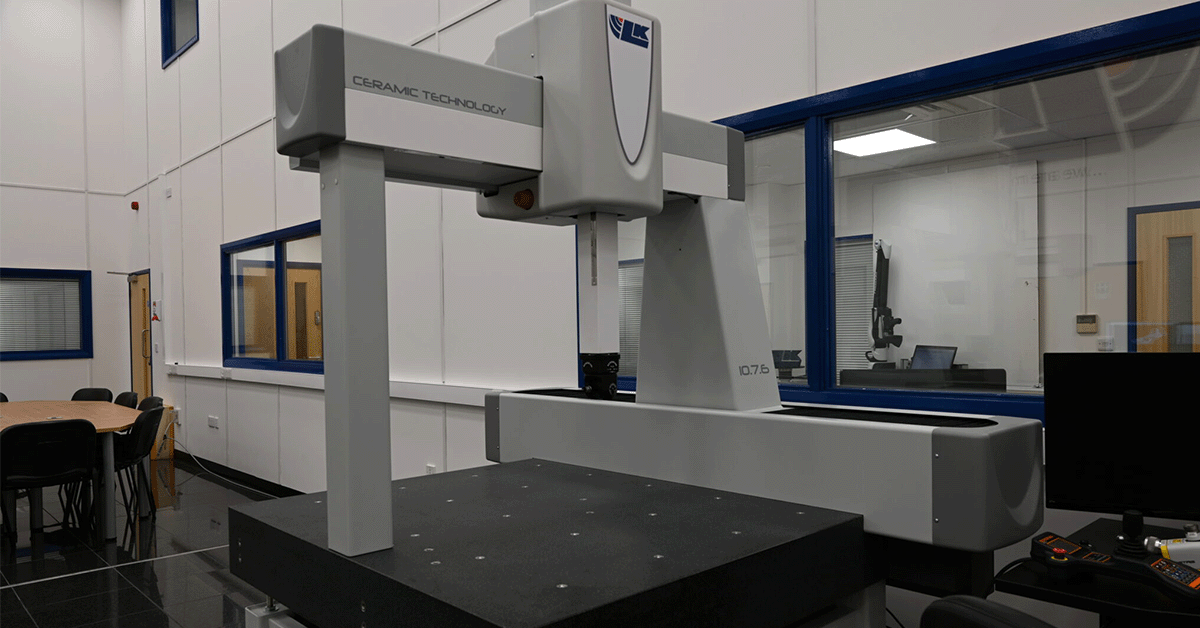
Contamination
Contamination is a significant concern in controlled environments.
To mitigate contamination risks, thorough cleaning and disinfection protocols, appropriate gowning procedures, and regular air filtration system maintenance should be implemented. Additionally, personnel training and adherence to protocols play a crucial role in preventing contamination.
Check out this in-depth article we wrote: The Most Common Controlled Environment Challenges for more info on how to prevent contamination.
Humidity
Humidity control is essential in environments where moisture-sensitive processes or materials are involved. Advanced humidity control systems, regular monitoring, and proper maintenance help maintain the desired humidity levels and prevent moisture-related issues.
Temperature
Temperature stability is critical in many controlled environments to ensure process integrity and accurate measurements. Temperature control systems, insulation measures, and proper HVAC systems contribute to maintaining stable temperature conditions.
GET THE LATEST INDUSTRY NEWS DELIVERED TO YOUR INBOX
Stay on the forefront of your industry with our weekly e-newsletter.
Environmental Challenges
Environmental factors, such as external vibrations, electromagnetic interference, and airborne contaminants, can affect the performance of controlled environments.
Strategies such as vibration isolation systems, electro magnetic shielding, and effective air filtration systems help mitigate these environmental challenges.
Technology and Controlled Environments
Advancements in technology offer innovative solutions to enhance controlled environments.
Embracing these technologies can improve efficiency, accuracy, and overall performance in controlled environments.
One of the best ways you can implement these technologies is through working with a design-build firm.
Unsure of what design-build is? Check out this guide we wrote about the benefits of design-build for controlled environments.
Conclusion
In conclusion, implementing and maintaining controlled environments is crucial for industries that require sterile, moisture-free, and precision measuring environments.By understanding the specific requirements and components of cleanrooms, dry rooms, and CMM rooms, businesses can optimize processes, ensure product quality, and comply with industry regulations.
Throughout this comprehensive guide, we have explored the concepts of cleanrooms, dry rooms, and CMM rooms. We discussed the definition, purpose, components, and maintenance of each type of controlled environment. Additionally, we explored the challenges and solutions associated with implementing and maintaining controlled environments.
Having a controlled environment is essential for industries that require sterile conditions, moisture control, and precise measurements. It ensures product integrity, process efficiency, and regulatory compliance, leading to improved quality and customer satisfaction.
Implementing a controlled environment requires expertise and careful consideration of industry-specific requirements. We encourage readers to explore further resources, consult industry guidelines, and seek professional advice to design and construct a controlled environment that meets their specific needs.
If you require assistance in designing and building a controlled environment tailored to your industry and process, please contact us. Our team of experts is dedicated to providing comprehensive solutions and ensuring optimal performance in controlled environments.
By implementing controlled environments effectively, businesses can optimize their operations, maintain product integrity, and achieve higher levels of quality and precision.
If you want to know our specific process for how we create controlled environments, click here.
If you’re interested in building a controlled environment for your business, contact us.



